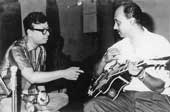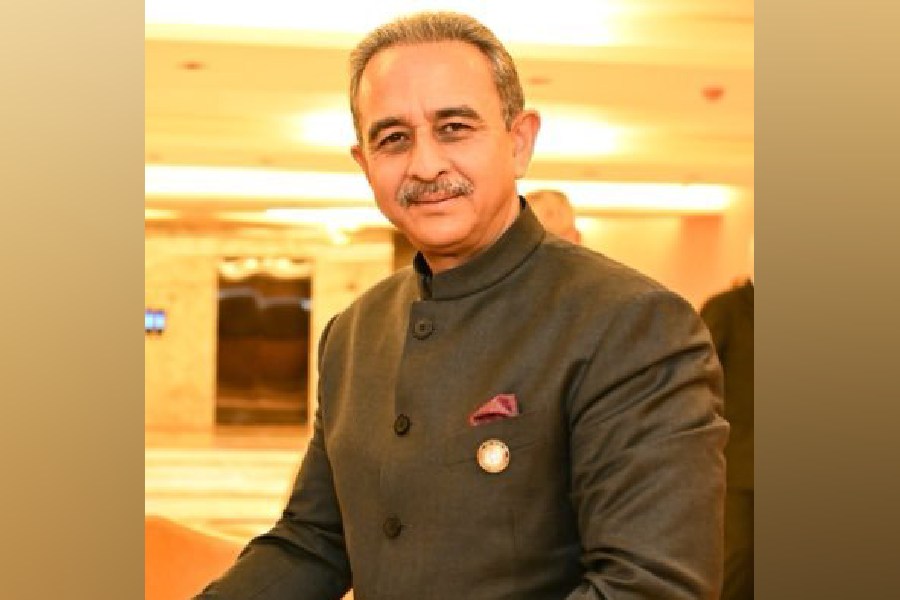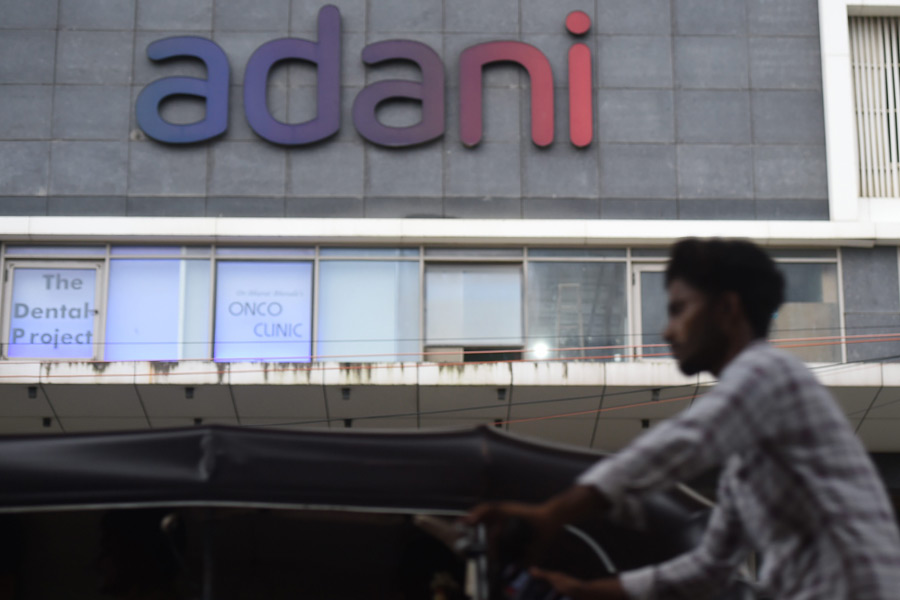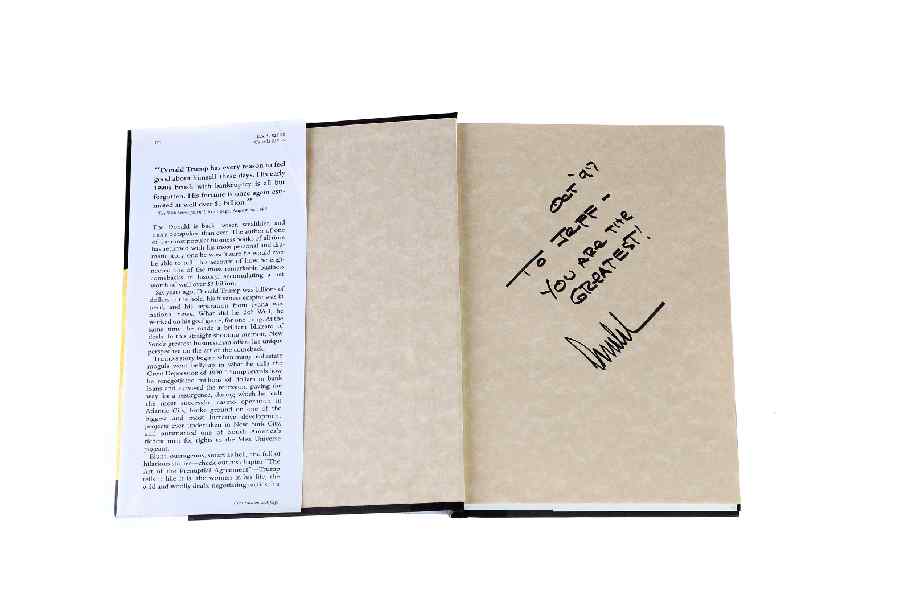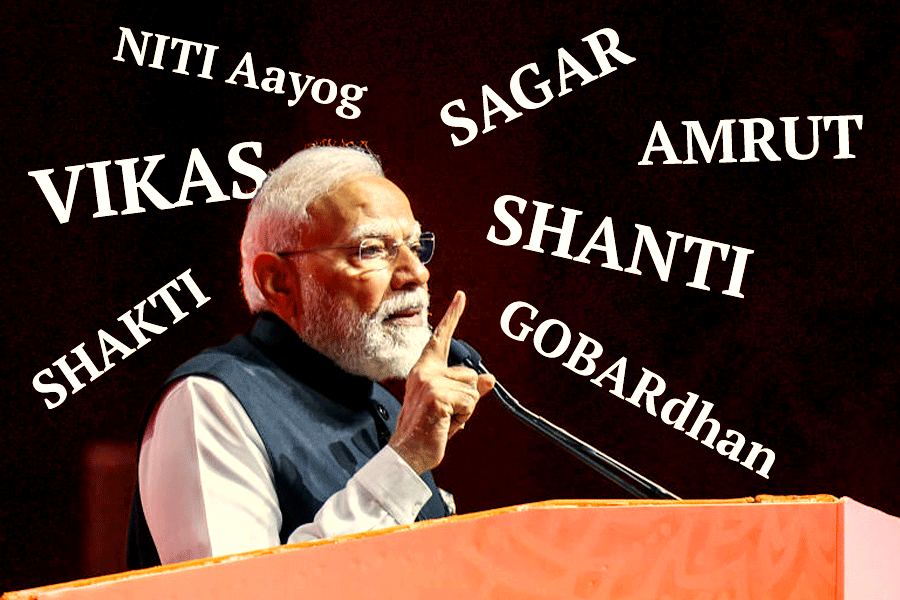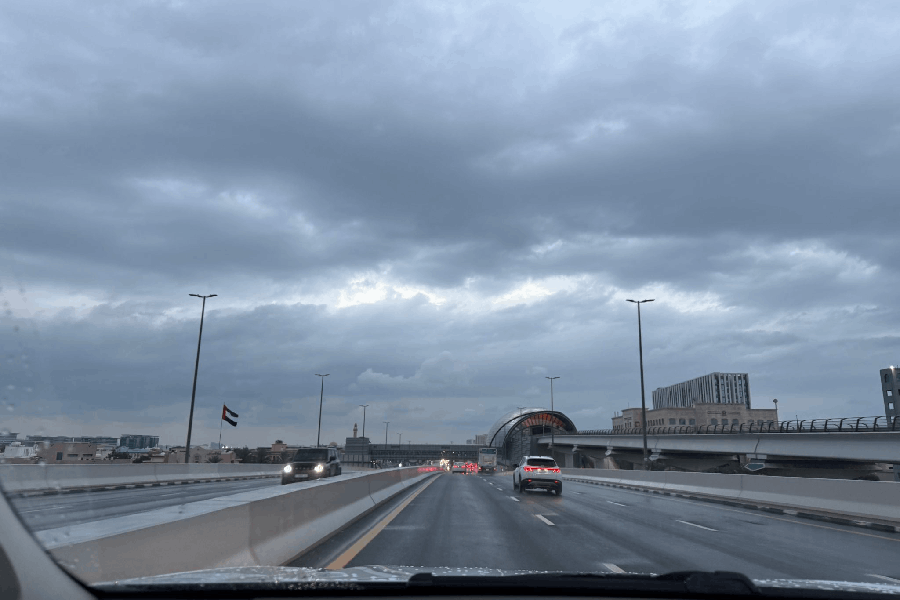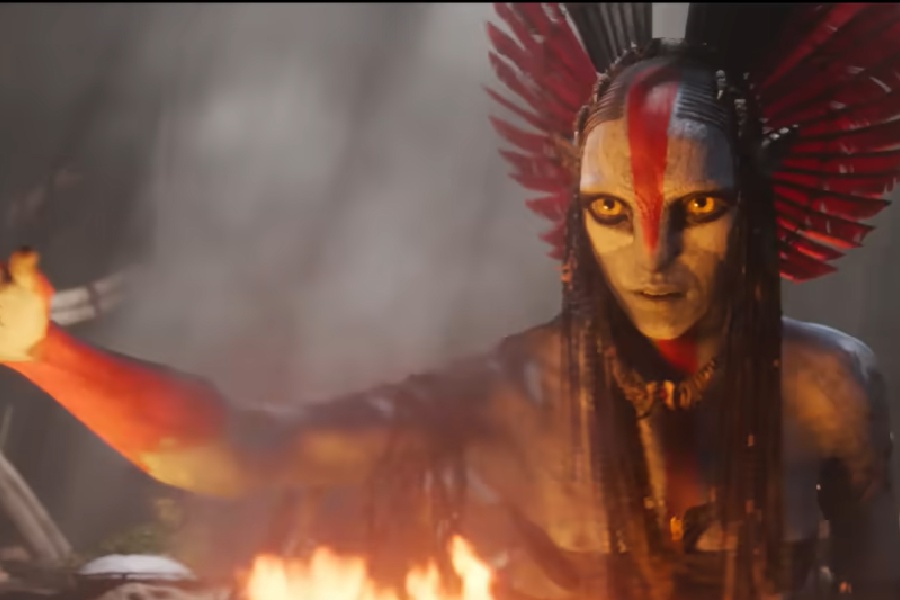 |
| RD Burman composes a tune for Teesri Manzil with Bhanu Gupta on the guitar; (below) the harmonica scene from Sholay |
 |
Silent and serene in a widow’s white, Jaya Bachchan moves from one lamp to another, putting out the flames as Amitabh Bachchan rests against a post, looking in another direction, but serenading with the harmonica. The scene was already canned. “ ‘Timing-ta dyakh (Keep the time in mind),’ Pancham told me as we watched the scene together.” Bhanu Gupta, RD Burman’s trusted musical hand, then played the soulful note for Sholay.
“A synthesiser was used for the first time in our industry in the film,” Gupta says. He has just played the Yeh Dosti tune from Sholay on stage for a Amit Kumar Fan Club show in Calcutta. “In the sequence where Jai and Viru are on the bike, they spot a village girl ahead with a pitcher on her head. Suddenly she runs off. That trrrrr sound in the background was Kersi Lord’s synthesiser.”
The standard time to record a song in those days was four hours. The modern track recording system enables singers and musicians to record on separate tracks with no need to even meet. “But we had to do it together. There were four sectional mikes for guitar, bass, drums and side rhythm sections. The singers had individual mikes. The balancing took ages. Once the balance was okayed, we were supposed to maintain the volume. If someone moved a bit away from the mike or started tapping his feet, the recording had to be started all over again.” Gupta recalls the trouble RD took recording the famous “Monica, o my darling” of Caravan in his own voice. “It kept coming soft.”
Gupta plays the guitar too. For that he thanks Salil Chowdhury. “A guitar was lying in his house with the strings torn. He asked me to take it. I bought a manual for 12 annas and a set of strings. In six months, I was ready to play in public.”
That is how the two sat— he with the guitar and RD with the harmonium. Humming the tune of Rayna bit jaye, he reflects: “People say RD made only western tunes. Where did the songs of Amar Prem, Aandhi, Kinara come from? Sometimes Asha would grumble, ‘Tu achchha gana sab Didi ko de raha hain [You are giving all the nice songs to Didi (Lata Mangeshkar)].’ ‘Chup kar,’ he would say. He never compromised with what he thought was best.”
If RD steered towards western music, it was because he was determined not to tread father SD Burman’s tracks. “Pancham never took his father’s help. Rather, SD would refer other people to him. ‘Producer sex beshi chaye, ami parbo na. (The producer wants sexy tunes. I can’t handle it),” he would say. “Piya toh se naina lage (Guide) actually was RD’s.”
Work with RD meant 10-15 songs a month. Gupta used the spare time to play for other composers (Dosti — Laxmikant Pyarelal, Kashmir ki Kali — O.P. Nayyar, Son of India — Naushad) as well as in concerts. “Lata always asked for me. I have played the guitar with classical musicians like Kishori Amonkar, Allah Rakha and Bilayet Khan. They were surprised that I had no classical training.”
Gupta was raised far from music — in war-torn Burma. “At the age of 12, I was working as English interpreter for the Japanese army. I could read and write Japanese. I was popular among their British prisoners of war. They taught me how to play the harmonica.” The boy got a princely salary of Rs 400 per month. “In those days, the starting salary of an MA degree holder would be about Rs 120. They gave me Rs 50 and sent the rest home.” At 15, Gupta bought his first plastic harmonica.
The bridge on the river Kwai near the Burma-Siam (Thailand) border was built in his presence. “Unlike in the British movie, it was never blown up, nor was it built by Alec Guinness,” he smiles. His family migrated to Calcutta in 1950.
In nine years, Gupta quit his job and set off for Bombay with Rs 600 and a dream to make it big as a harmonica player. “My first break came with the film Paigam from C. Ramachandra (of Gore gore o baanke chhore fame). Soon I got a call from Madan Mohan. I never looked back.”
Gupta’s bond with RD was cemented while the latter was making the music for Teesri Manzil. “He was very intelligent but impatient too. He always acknowledged my contribution.”
“In the Yaadon ki Baraat title song, I did not like the opening bars. He took my suggestion and told Nasir Husain (the producer). Husain got his driver to fetch a bottle of Scotch for me from his car. Another time, we were playing chess and RD stopped on hearing the tune I was humming. He used it for Tolo Chhinno Bina for the film Ekanto Apon, where he got me to play it on the harmonica.”
RD would get expensive gifts for him. But Gupta’s proudest moment was when Lata congratulated RD for Kya yehi pyar hai from Rocky, of which the sthayi (refrain) section was Gupta’s work. “RD slapped my back and said: ‘Didi, yeh iss saale ne banaya hain (This rascal has done it).’ Lata turned to me and beamed.”
At 79, Gupta still has the lung power to stand and play the Sholay tune elegantly on stage. “The secret is a disciplined life and chewing neem leaves and garlic in the morning for 30 years,” smiles the man.

